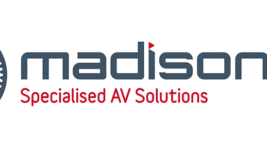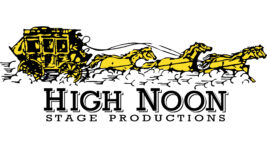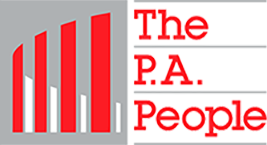TECH TALK
6 Jun 2023
GHIBLI
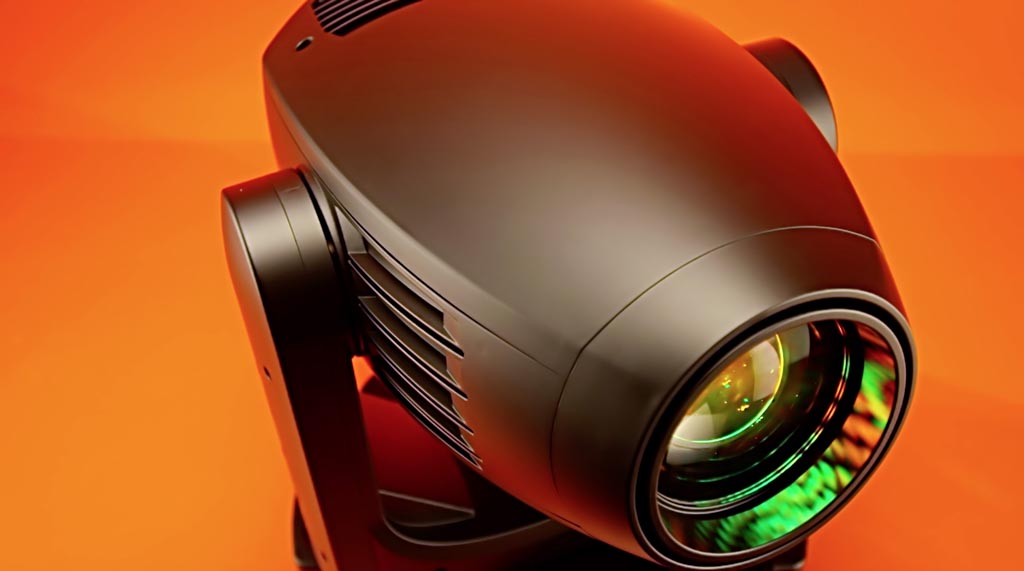
Subscribe to CX E-News
Putting Ayrton on the Map
The Ayrton Ghibli is an LED moving head spot, sold by Show Technology from 2017. It would be one of Ayrton’s first moving head spots sold in Australia. It was a game changer for Ayrton and how they were perceived in the Australian market. What would follow would lead Ayrton to be one of the best-selling lighting manufacturers in the country.
WHO IS AYRTON?
Ayrton Lighting was founded in 2001 off the back of collaboration between professionals in lighting, technology, and industrial design. Their goal has been to translate new technology and avant-guard development concepts into unique and original products.
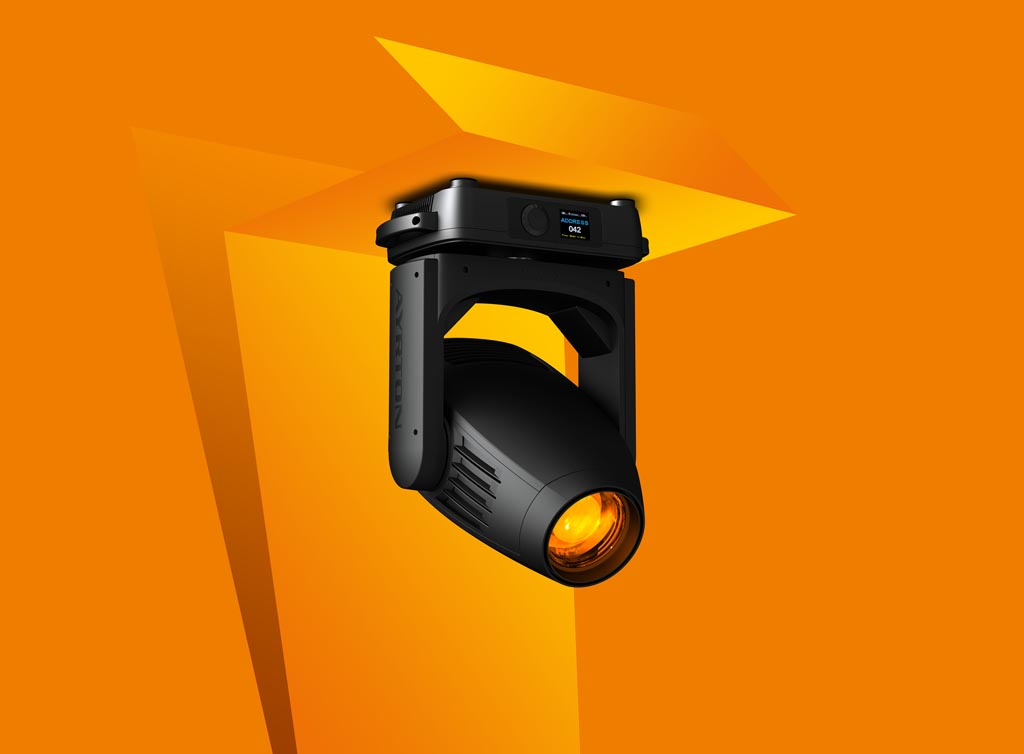
Although they have only really come onto the scene in Australia over the last five or so years, Ayrton have been around a lot longer. Arguably, the most well-known Ayrton products prior to the Ghibli are the MagicPanel, MagicBlade and MagicDot.
The goal of the Ayrton Ghibli was to be the best feature-packed LED moving head spot on the market. It was going up against some real moving light heavyweights in Claypaky, who were coming to market with their Axcor range, and Martin, who were competing with their ERA and Encore performance ranges.
One downfall of LED lights is that some flicker on TV. As well as this, the dimming curve on an LED fixture, especially in an RGB fixture, will have different colours fading out at different rates. For example, fading out an RGB fixture over 10 seconds on camera could result in having the last half a second being green.
This has been taken care of with the Ghibli. Its white LED engine is flicker-free and is perfectly suited for television applications and video events. We are now seeing more and more gigs that are lit for camera rather than the audience.
The Ghibli has an impressive zoom range of 8:1. At its narrowest point of 7 degrees, it is as wide as a Martin MAC 101, a light considered to be a pin spot. Out to 56 degrees it can be used to wash a stage. For reference, a WFL (Wide Flood Lens) Par throws out an oblong beam of 30 degrees by 51 degrees. It has a flat beam field meaning that there is no hot spot in the middle of the light; the amount of light is even on all parts of the beam.
It is a versatile work horse fixture, more than capable of making up the backbone of any high-end lighting rig. It’s quieter than you would imagine too, making it great for corporate or TV gigs.
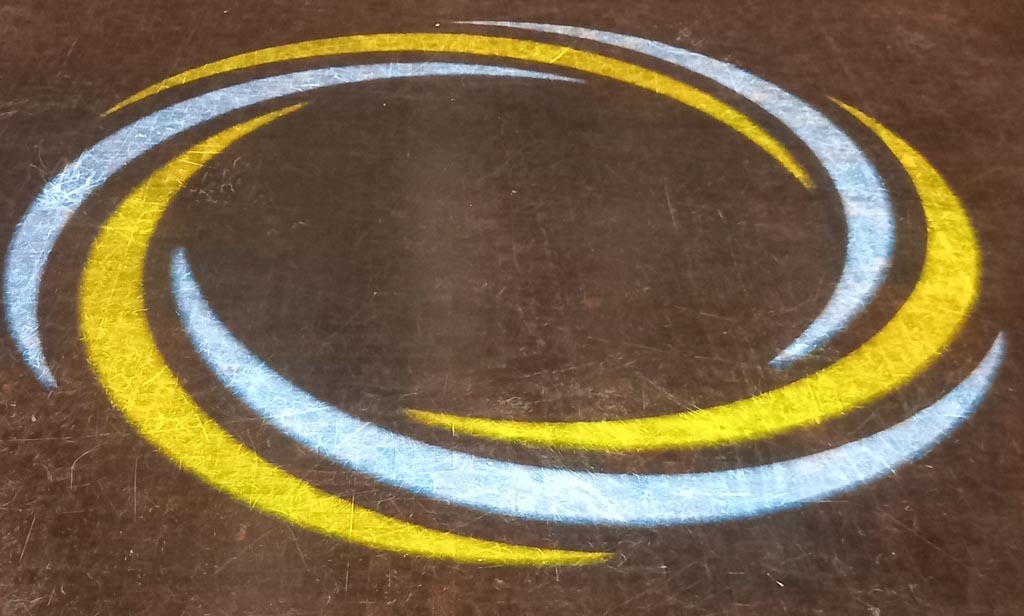
The Ghibli’s gobos are great but can be a little hard to change; they’re also a custom size. By now, the Ghiblis have become so popular this doesn’t matter anymore. In the stock range of gobos there is a two-colour gobo. When in open white, it looks white and yellow and mixes accordingly (i.e. changing the light to blue will have the output as blue and green).
Although it’s a modular light, everything is very compact. Modules need to be taken out a certain way and in a certain order. Belts can be tricky to change or replace. Emphasis has been created on making it a smaller, more compact light. This came at the expense of being able to easily work on them and pull them apart if you needed to do a deep clean or get to certain modules or parts for cleaning. Probably best not to attempt repairs where you are removing modules and belts unless you have experience servicing moving lights. It might not be the best light to learn on if you want to teach yourself to be a moving light tech.
The base is relatively small for the head of the light. Not really an issue, even when using them as floor fixtures, but worth noting. This could also be a knock-on effect from trying to make the light as compact as possible. On the flipside, this resulted in a smaller footprint, meaning you could stick more of them closer together, both on the ground and on the truss. Clamps can be moved to multiple positions to account for truss webbing.
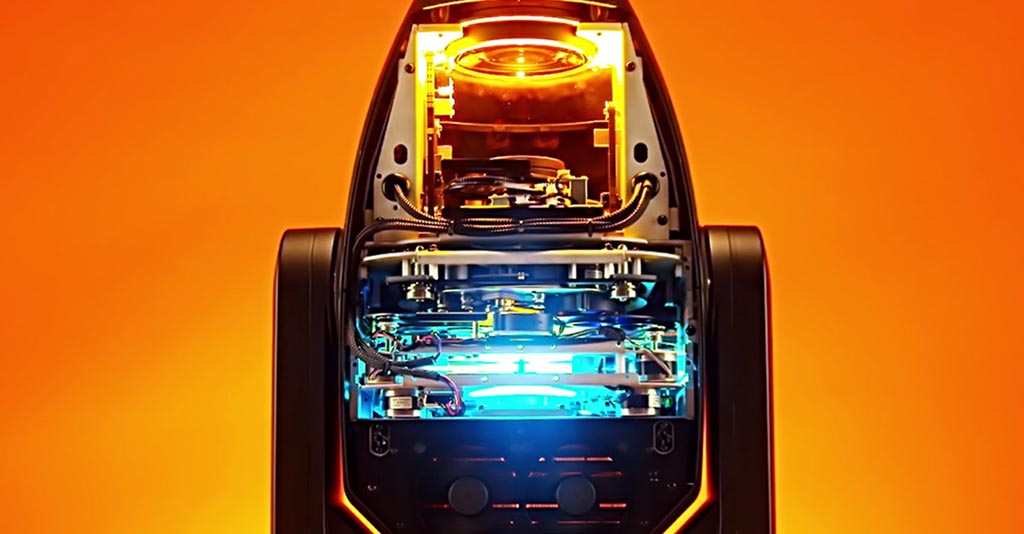
The general consensus is that the Ghibli has been found to be very reliable, with very few issues. A fantastic feat, as teething issues would be more than understandable. Obviously, we haven’t seen the light or the brand with moving head spots in the 10–20-year age range, but the early signs are good and its looking like the Ghibli will go the distance in the long run.
It has wireless DMX, handy in today’s environment. What that also does is future proof the light; one would expect to see more wireless DMX moving forward, not less.
Weighing just over 35kg, it is on the heavier end, but boasts a lot of features for its weight. Because of the size of the head, it can be an awkward light to flip – definitely a two-person lift. One thing keeping it at such a relatively light weight is that it is IP20 rated. There is an IP65 rated version of the Ayrton Ghibli called the Perseo, which weighs just under 39kg.
After the release and success of the Ghibli, Ayrton followed up by releasing a large range of fixtures such as the Diablo, Domino, Cobra, Zonda, and Mistral, to name a few. In just a few short years they have gone from a few lights to offering something to most segments of the moving light market. Their range continues to grow and develop with many more releases on the horizon.
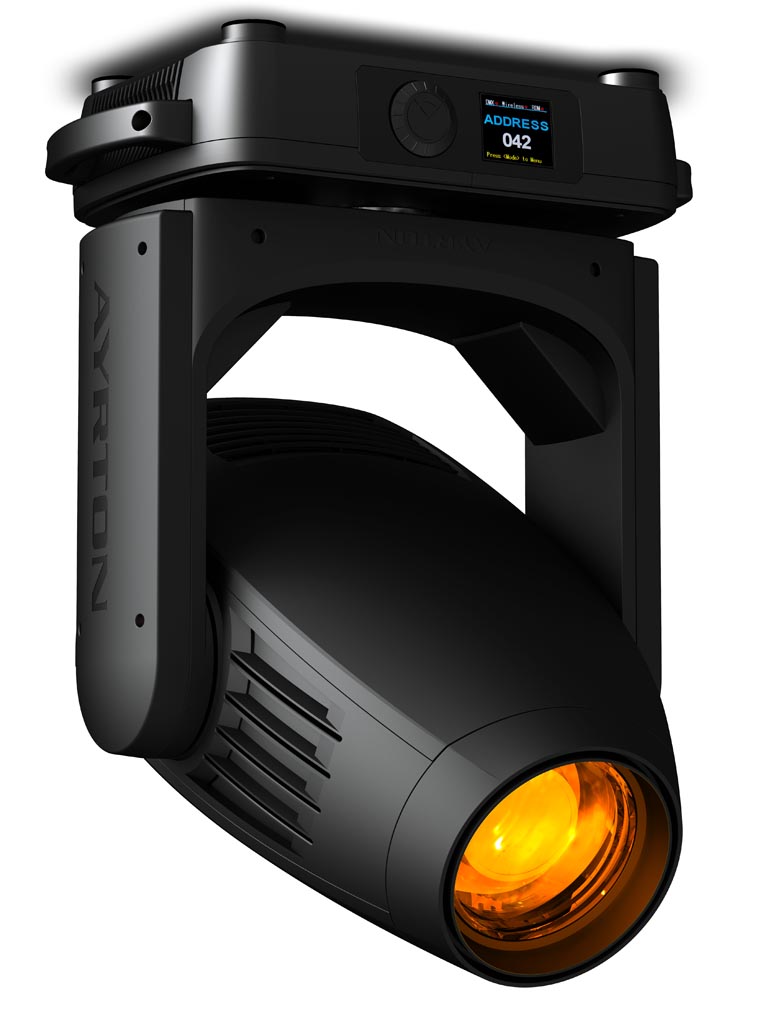
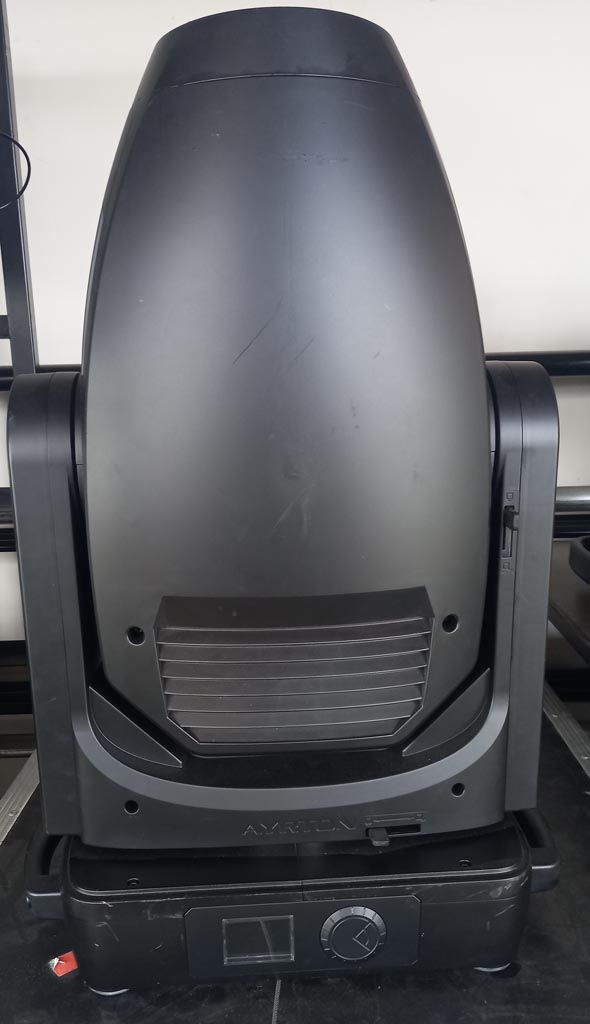
THE SPECS
OPTICS
• 13 elements 8:1 zoom high-resolution optic system
• Beam aperture: 7° to 56°
• Fast motorised linear zoom
• Tempered anti-reflective coated lenses
• 137 mm frontal lens
LIGHT SOURCE
GHIBLI S
• 36,000 lumens 8000 K white light engine
• Total luminaire output: up to 23,000 lumens
• Colour temperature output: 7000 K
• CRI: greater than 70
GHIBLI TC
• 26,000 lumens 6500 K white light engine
• Total luminaire output: up to 17,000 lumens
• Colour temperature output: 5900 K
• CRI: greater than 90
GHIBLI S & GHIBLI TC
• Rated life (L70): up to 40,000 hours
• Flicker-free source management suitable for TV and film
MOVEMENT
• Moving-head operated via either 8- or 16- bit resolution
• Pan and tilt with automatic repositioning
• Moving-head range: 540° (pan), 270° (tilt)
COLOURS
• CMY colour mixing
• Variable CTO colour temperature correction
• Fixed colour wheel with six complementary colours and High CRI filter
GOBOS
• Indexable rotating gobo wheels with 7 high-precision glass gobos, plus open position
• Adjustable-speed rotating gobo in both directions
• Fixed gobo wheel with 8 high-precision glass gobos, plus open position
FRAMING SYSTEM
• 4 individually positionable shutter blades on a 100% surface area in all positions
• Rotation of the framing system module: +/- 45°
IRIS DIAPHRAGM
• Fast iris diaphragm with adjustable dynamic effects
• Iris range: 15% to 100% open
FROST
• 2 frost filters: one light, one heavy
EFFECTS
• Graphic animation effect-wheel with continuous rotation in both directions
• 5-facet circular rotating and indexable prism
DIMMER / STROBE
• Electronic dimmer, allowing perfect light adjustment from 0 to 100% without colour variation
• Strobe effect, with speed adjustment from 1 to 25 flashes per second
Subscribe
Published monthly since 1991, our famous AV industry magazine is free for download or pay for print. Subscribers also receive CX News, our free weekly email with the latest industry news and jobs.

